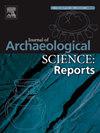重新思考嵌入式采购的概念:来自黎凡特旧石器时代下层的启示
IF 1.5
2区 历史学
0 ARCHAEOLOGY
引用次数: 0
摘要
宾福德在半个多世纪前提出的 "嵌入式采购 "概念表明,石器采购通常与其他生计活动相结合,这一概念已成为原材料研究的基石,并继续主导着许多研究旧石器时代中下期燧石来源的考古学家的解释。然而,来自以色列旧石器时代下叶阿切洛-雅布鲁迪Qesem洞穴以及旧石器时代下叶和中叶迪尚和阿奇巴拉燧石提取和还原综合体的证据表明,这种观点值得重新考虑。在克塞姆洞穴,大量非本地材料,特别是在特定的文字技术类别中,表明了对不同类型燧石的选择性采集和利用,包括远距离采集的证据。在 Dishon 和 Achbara,发现了多个燧石提取和还原尾矿堆,其中有被剔除的手斧和 Levallois 陶芯,这些燧石与来自 Ma'ayan Barukh 和 Gesher Benot Ya'aqov (GBY) 这两个距 Dishon 建筑群 20 公里的阿丘利亚遗址的手斧之间的地球化学成分相似,这表明存在有组织的燧石提取任务。根据这些发现,我们建议重新评估嵌入式采购模式的主导地位,因为直接采购策略在黎凡特旧石器时代晚期就已开始使用。此外,根据考古学和人种学数据,我们认为文化、社会、宇宙学和本体论因素也影响着旧石器时代下层居民的石器材料采购行为。本文章由计算机程序翻译,如有差异,请以英文原文为准。
Re-thinking the concept of embedded procurement: Insights from the lower Paleolithic of the Levant
Binford’s concept of embedded procurement, proposed over half a century ago, which suggests that lithic procurement was typically integrated with other subsistence activities, has become a cornerstone of raw material studies, and continues to dominate interpretations by many archeologists studying Lower and Middle Paleolithic flint sourcing. However, evidence from Lower Paleolithic Acheulo-Yabrudian Qesem Cave, and the Lower and Middle Paleolithic Dishon and Achbara flint extraction and reduction complexes, in Israel, suggests that this view warrants reconsideration. At Qesem Cave, significant proportions of non-local materials, particularly within specific typo-technological categories, indicate a selective approach to the procurement and exploitation of different flint types, including evidence of long-distant procurement. At Dishon and Achbara, multiple flint extraction and reduction tailing piles have been identified, featuring rejected handaxes and Levallois cores, and the geochemical composition similarity between this flint and handaxes from the Acheulian sites of at Ma’ayan Barukh and Gesher Benot Ya’aqov (GBY), both located ∼ 20 km from the Dishon complex, suggesting the existence of task-specific forays, dedicated to the organized extraction of flint. Based on these finds, we propose that the predominance of the embedded procurement model should be reassessed, as direct procurement strategies were already in use during the Lower Paleolithic of the Levant. Moreover, drawing on archaeological and ethnographic data, we argue that cultural, social, cosmological, and ontological factors also influenced lithic materials procurement practices among Lower Paleolithic populations.
求助全文
通过发布文献求助,成功后即可免费获取论文全文。
去求助
来源期刊

Journal of Archaeological Science-Reports
ARCHAEOLOGY-
CiteScore
3.10
自引率
12.50%
发文量
405
期刊介绍:
Journal of Archaeological Science: Reports is aimed at archaeologists and scientists engaged with the application of scientific techniques and methodologies to all areas of archaeology. The journal focuses on the results of the application of scientific methods to archaeological problems and debates. It will provide a forum for reviews and scientific debate of issues in scientific archaeology and their impact in the wider subject. Journal of Archaeological Science: Reports will publish papers of excellent archaeological science, with regional or wider interest. This will include case studies, reviews and short papers where an established scientific technique sheds light on archaeological questions and debates.
 求助内容:
求助内容: 应助结果提醒方式:
应助结果提醒方式:


